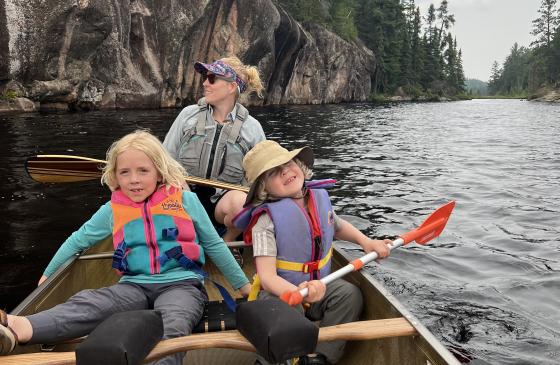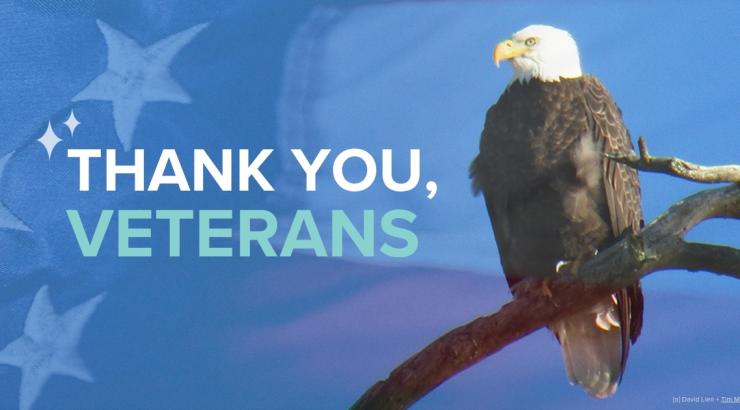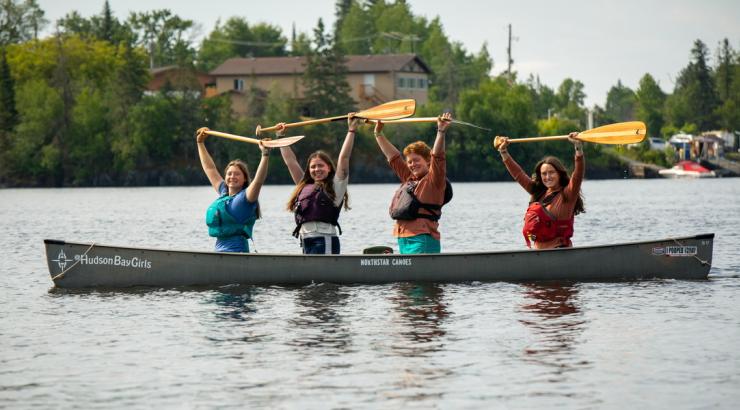I just returned from a fantastic Boundary Waters Wilderness canoe camping trip with my little kids! I get a lot of questions about how we make this happen - I think it can seem overwhelming! I don’t so much have “advice,” rather some tips and how we like to do it.
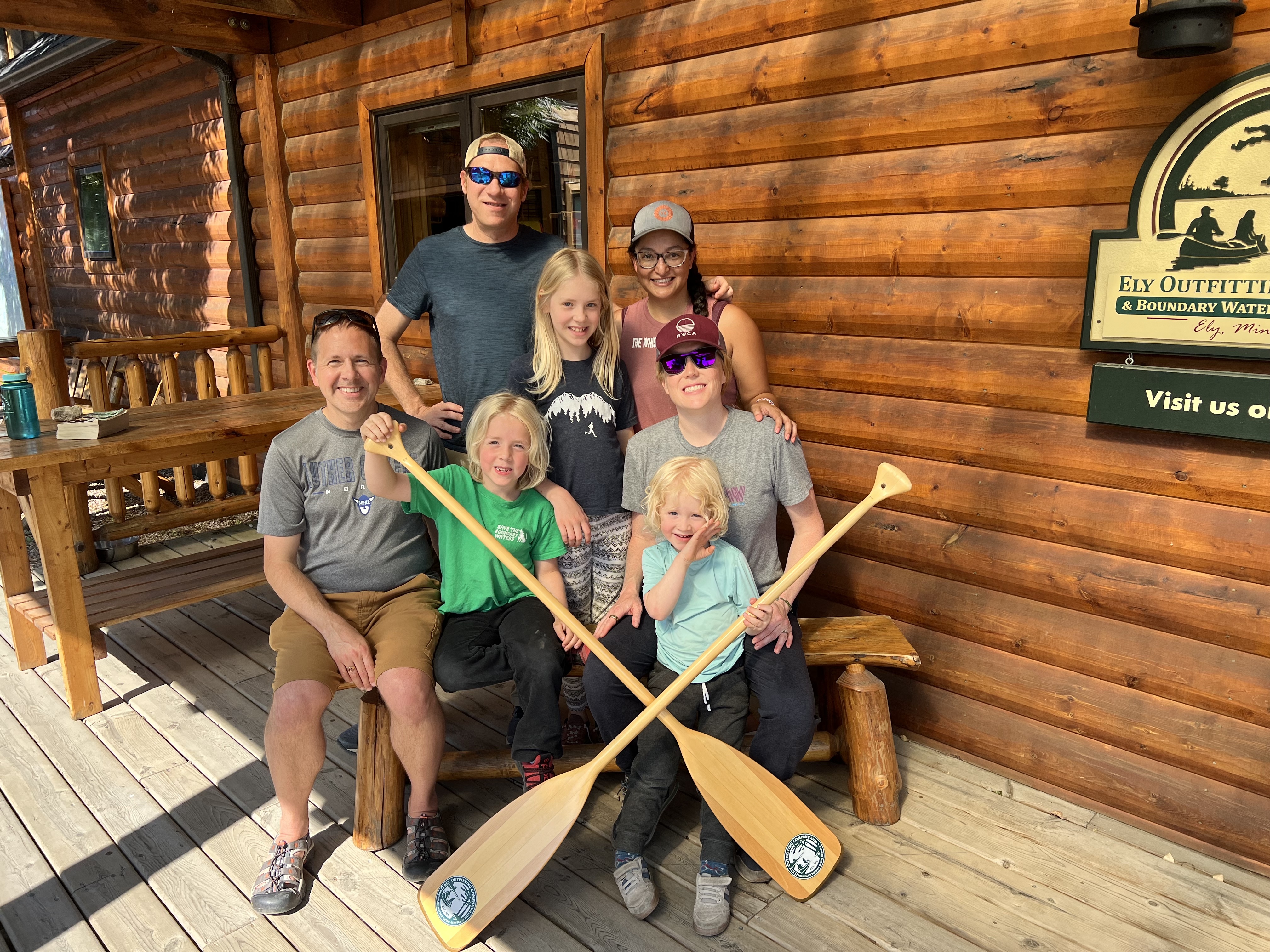
Here’s a recap of our trip this July:
After renting some gear we don’t own (canoes, GPS device for emergency/my peace of mind, an additional portage pack, and a rope & pulley system to hang food pack from trees) from Ely Outfitting Company in Ely, Minnesota, we headed to Fenske Lake Campground -- one of many Wilderness-adjacent car-camping options run by the U.S. Forest Service -- and we set up camp. It was beautiful - right on the lake, and a still and pretty night. We grilled steak, potatoes, and corn on the cob on the fire grate - why not treat yourself when you can? Many of the USFS campgrounds have sites you can reserve months in advance, as I did, as well as first-come-first served sites (plenty seemed open the day we were there.)
The next morning we broke camp, packed up, and drove just a couple miles up the road to our entry point at South Hegman Lake. It’s an 80-rod portage from the small gravel parking lot down to the lake, and we took several trips shuttling all our gear down. While portaging and paddling, we met two different groups coming out, who reported on the campsites they were leaving - so we had the pick of the lake (there are three campsites). After an easy short paddle we set up at a lovely, large site on a rocky peninsula pointing north. With a chance for an aurora show during our stay, it would provide perfect viewing. Unfortunately, the aurora didn’t materialize this time, sigh...
This brings me to my General tip #1 for Boundary Waters trips with kids: Make it easy on yourself.
- We take at least one more adult than kids. In this case me, my husband, and two friends (joining us for their first BWCA trip!), and then our kids, ages ten, seven, and three and a half. Having extra adults is helpful since little kids require their own gear but can’t really carry it (they can carry smaller things like a daypack, water bottles, paddles, etc.), or meaningfully paddle a canoe.
- Max one lake, one portage: I like to pick an entry point where we can paddle a maximum of 1 lake and do 1 portage to get to a campsite, and then we stay there for several days with the option for day trips nearby and plenty of downtime at camp for swimming, playing, relaxing, cooking, and fishing. If you’re more ambitious and/or have older kids, moving campsites each day and taking a larger loop is doable and a wonderful way to experience the Boundary Waters. I’m not there yet with my littles!
- Bring that stuff you want and need - if you’re not going to paddle and portage a lot or move campsites every day, you can bring things like a travel crib (yep, we’ve done it!), diapers, maybe an inflatable paddle board (I've also done that), our large 6 person tent and screen porch, and our own cushy EXPED mattress for ourselves which is very comfortable!! My kids have been known to smuggle in a stuffed animal or doll too. This is not an ultralight minimalist backpacking trip, thank goodness.
We took two different nearby day trips:
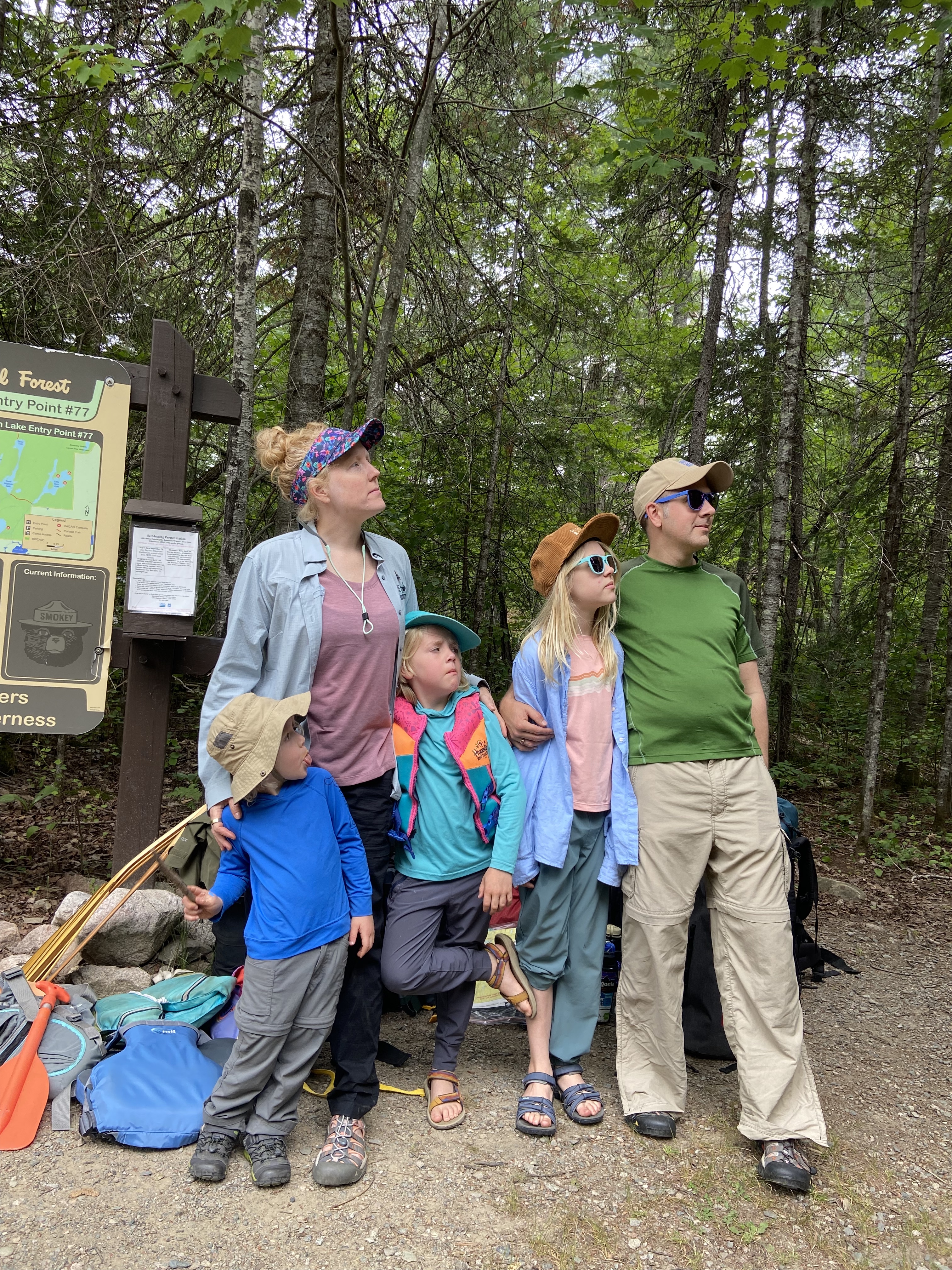
- North Hegman Lake (super short portage 19 rods), where if you paddle into the north arm, you can see pictographs (one of the hundreds of such cliff paintings by the ancestors of the Anishinaabe-Ojibwe-Chippewa Indigenous people throughout the Boundary Waters). The paintings on Hegman depict a person, a small 4-legged animal, a moose with impressive antlers, and people in canoes. Keep going a little north and paddle through a very cool floating bog!
- Little Bass Lake - a little longer, more challenging portage from N. Hegman (148 rods), though with only our day-trip stuff we didn’t have to take multiple trips to carry everything. I got my foot stuck in the mud, lost my balance, and fell on my butt while lifting the canoe off my shoulders and into the lake at the end of the portage, and I got pretty soaked. It was windy and sunny, so I dried off pretty easily at our lunch spot.
Now for my General tip #2: Involve the kiddos and have fun.
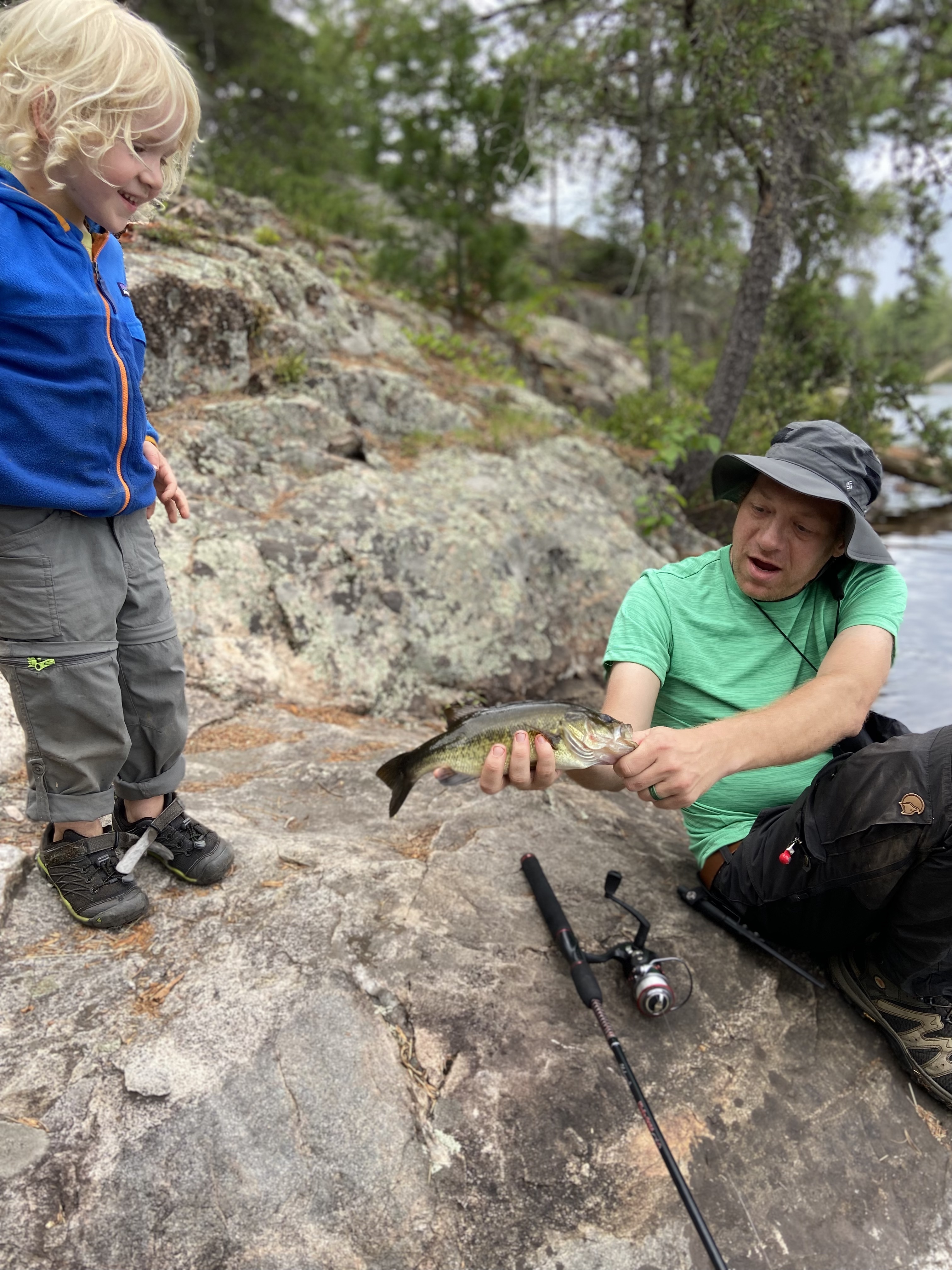
- Get excited together as you plan and prep! We shop for any new clothes/gear they may need (everyone needed new camping pants at REI this year), get their input on the menu & snacks (Mac n cheese! PB&J! Trail Mix! Tang! Brownies! Astronaut ice cream! Gummy bears!), get them helping with what they can around camp like water filtering, carrying loose items and helping each other on the portages. This year they got some fishing instruction for the first time (thanks to my friends Monica & Dave!) and watched the process of cleaning, cooking, and then eating the fish - they were surprised to find they loved the meal (who wouldn’t? Fresh largemouth bass pan fried with panko, butter, and garlic.)
- Play! My kids spend hours at the campsite building tiny fairy houses/villages out of leaves, sticks, pinecones, and rocks. The double ENO hammock is a favorite. And it’s become a tradition for us to find rocks and sticks we can make a Kubb game set out of. In the tent or around the fire we play group games like silent football, counting games and others we’ve learned at summer camp over the years, and tell riddles, and laugh a lot!
- Safe swimming adventures! With life jackets (“boat coats”/“float coats”) and water shoes on, we can all swim way out into the lake when it’s calm. This year, we explored and named nearby small islands and floated alongside loons every day (sometimes twice a day). It was pure joy.
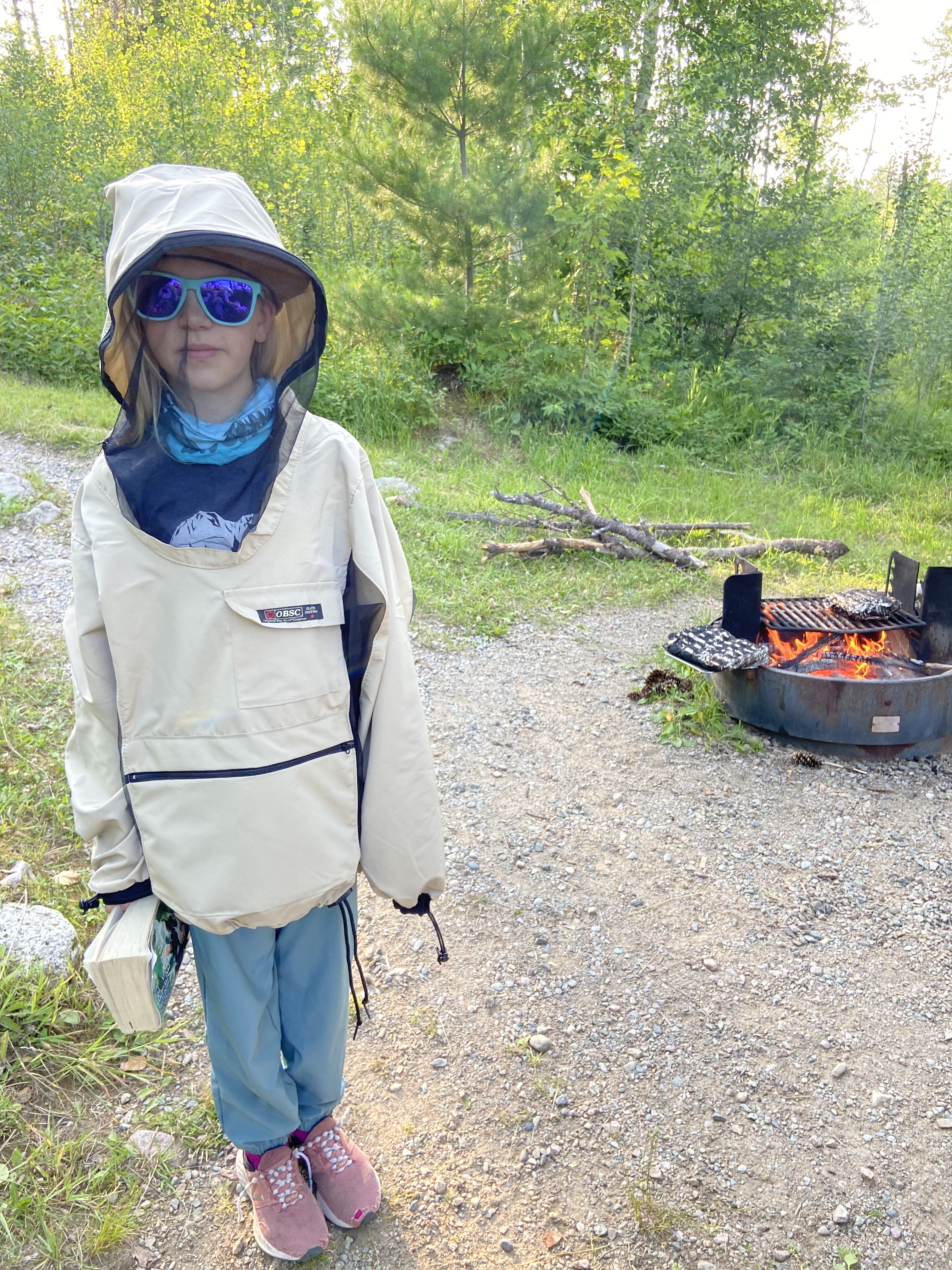
Kids have surprised me over the years of doing these trips. I find that, for the most part, they’re never bored - they play with sticks and rocks and explore the campsite happily for hours. My kids didn’t bat an eye when it rained most of our final day while we were packing out - in fact, they made up a music and dance number in the rain. Mosquitos can be a real nuisance, just like with adults, though I find my kids, one of them in particular, more susceptible to bites and swelling than most adults, unfortunately. We do as best we can with bug nets, spray, avoidance, and afterbite/anti-ich meds. At the same time, they almost take it for bragging rights (“I have 34 bites!” “I have 60!”)
This year’s trip was one of the easiest we’ve done in terms of paddling distance/campsite access. We’ve also done these routes as a family in recent years:
- Sawbill entry point to camp on Alton Lake. Day trip to see mysterious balancing rock.
- East Bearskin entry to camp on Alden Lake. My youngest was 9 months old.
- Moose River South to Big Moose Lake - lots of beaver dams! I was 6 months pregnant. I also wrote a blog about that trip.
Some additional notes on safety:
- All kids and adults wear appropriate PFDs (life jackets) while paddling or hanging out at the water’s edge. Even with a PFD, a kid clinging to you makes it hard to stay afloat or swim - I know this from our swim adventures! We have paddled through wavy waters & wind, which can be a bit nerve-wracking with little kids.
- Sun & bug safety - be proactive and have plenty of gear and medications.
- Proper clothing & gear - kids should follow the same guidelines as adults with packing, and sometimes an extra layer for them is smart (my kids run hot though or generally seem oblivious to the weather lol). This means non-cotton & quick-drying shirts and pants, fleece or wool warm layers, rain gear, hats, etc. We pack everything into our multiple Sea to Summit dry-bags inside of Granite Gear and CCS portage packs. Also sturdy camp shoes (dry) and water shoes (KEENS or similar) should be worn at all times to protect feet from cuts and scrapes. I admit my kids kept running around camp in just their socks this time *sigh*
- Take extra care with kids around cooking stoves and fire - we outlaw kids (or anyone really) walking through the cooking/fire area during mealtimes because something or someone could get knocked over, spilled, burned etc.
- I bring along magnesium, colace, antihistamine meds, and kids tylenol for any issue on the trip, as well as a basic first aid kit which any group should have
- I always rent a satellite phone or GPS device from an outfitter so that in case of emergency, we could contact help - you can never count on cell service
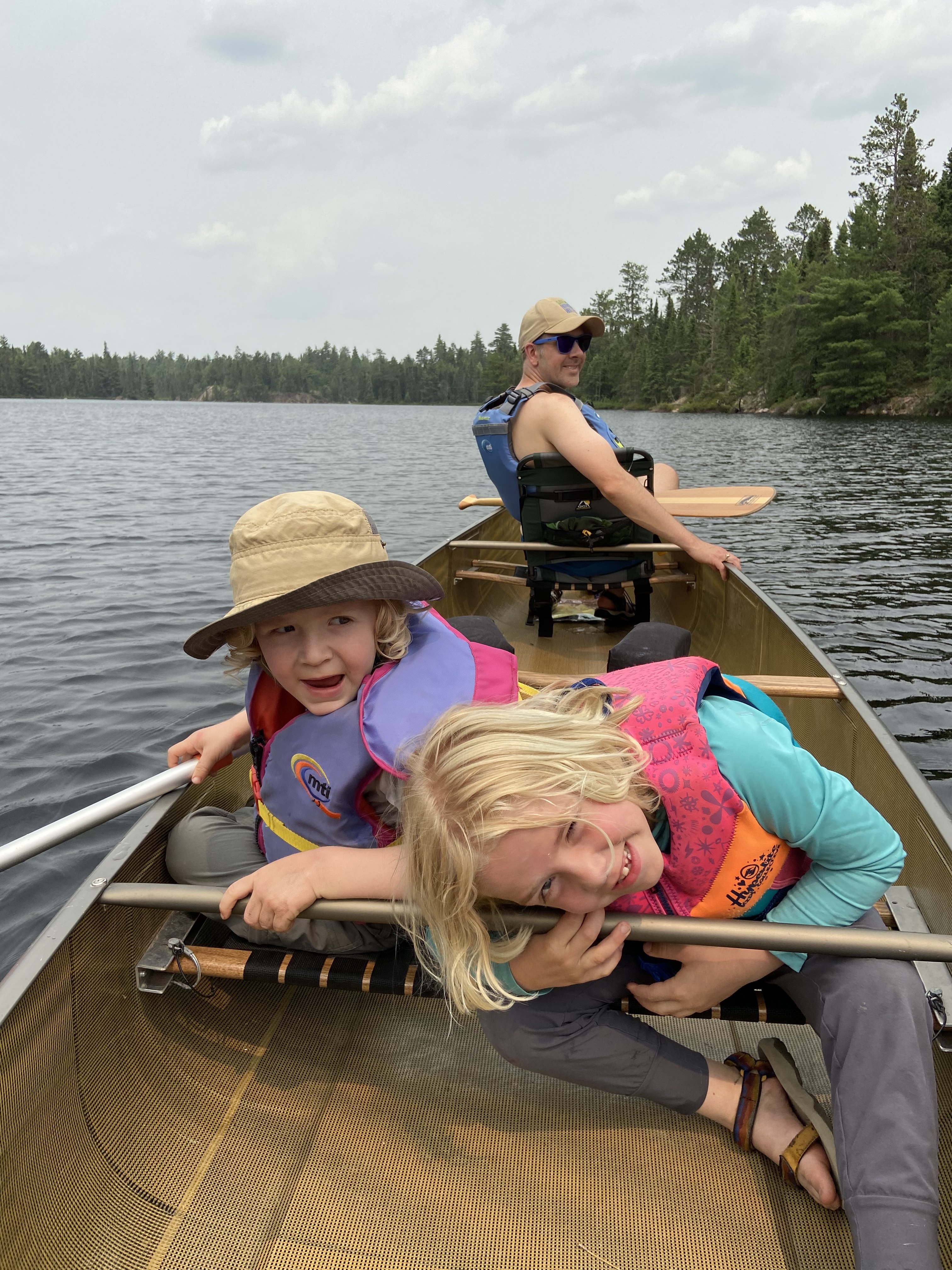
My kids know how special the Boundary Waters is, and these trips are memorable to them (and all of us!) It’s important to me to do these adventures even though they can be a little difficult and a lot exhausting (I never call it a “vacation” but rather a “trip!”)
You know your kids and your family best, so do what works for you! I grew up doing canoe trips with family and church groups, have led trips with my friends over the years, -- so I have that background knowledge to start from. If you need more assistance getting started on your trips, outfitters will have route ideas and can even provide a guide to accompany your trip, which might be a great option for your first (or any) time!
Since 2014, Sam Chadwick has helped lead the locally-based, national campaign to protect America's most-visited wilderness from proposed copper mining. As the Associate Director for Save the Boundary Waters and Northeastern Minnesotans for Wilderness, she's involved in advocacy, communications, inclusion, fundraising, partnerships, and creative projects for this coalition of 400+ businesses, conservation, access, and hunting & angling organizations and other allies. Sam lives in Minnesota and loves exploring the outdoors with her young kids.
